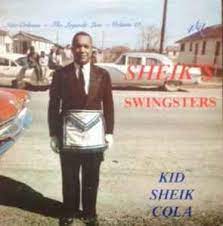
Daily Dose Of Jazz…
George Colar, better known as Kid Sheik or Kid Sheik Cola, was born on September 15, 1908 in New Orleans, Louisiana. In his youth he started playing blues piano around 1920, but took up trumpet after being inspired by and taking lessons from Wooden Joe Nicholas and Chris Kelly for whom he sat in from time to time. During this period he briefly had a band of his own.
In the Thirties he played second trumpet with Buddy Petit, marched with Kid René’s band and from 1952 was a member of the Eureka Brass Band. He worked with George Lewis in the mid-1940s. His Gin Mill Blues is considered a nice fish fries boogie.
Over the years, Kid Sheik performed with many jazz notables, including Harold Dejan’s Olympia Brass Band and Louis Armstrong. By the 1960s he had his own band. He was still blowing strong in New Orleans in 1970.
Kid Sheik was the subject of the official New Orleans Jazz & Heritage Festival poster in 1990. He is featured in a 35mm twelve-minute black and white film directed by Frank Decola titled The Cradle Is Rocking, a copy of which is in the Folkstreams Collection in the Southern Folklife Collection of the Wilson Library at the University of North Carolina in Chapel Hill.
He is most associated with Dixieland jazz and was a long-term performer with the Preservation Hall Jazz Band. In his later years, he married pianist Sadie Goodson. Trumpeter Kid Sheik Cola, who got his nickname from his chic style of dress, transitioned on November 7, 1996.
More Posts: bandleader,composer,history,instrumental,jazz,music,trumpet
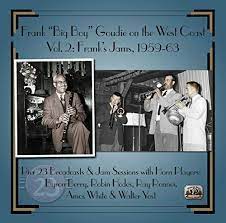
Daily Dose Of Jazz…
Frank “Big Boy” Goudie was born on September 13, 1899 in Youngsville, Louisiana, 150 miles west of New Orleans, Louisiana in the area of the state known as Cajun country, where he lived until the age of eight. His family then moved to New Orleans, where he began playing cornet, and became proficient enough to find work with local bands such as Papa Celestin’s Original Tuxedo Band and the Magnolia Band, two of the top New Orleans bands at that time. He began studying clarinet and tenor saxophone, which would eventually become his primary instruments.
Arriving in New Orleans around 1907 meant Frank had a front-row seat to the blossoming of early jazz with King Oliver, Kid Ory, Johnny Dodds, Freddie Keppard, Jimmie Noone and a host of others, were in their prime and working at many venues throughout the city.
With the 1918 closure of Storyville and the early 1920s, New Orleans experienced a diaspora of musicians, one of whom was Goudie. In 1921 he joined a band accompanying a traveling minstrel show, and for the next four years he performed in Louisiana, Texas, New Mexico and California. He joined another traveling group, Frank Matthews and the Louisiana High Browns, ending up in Tampico, Mexico in 1925.
That same year he sailed to France, making Paris his home base for the next 14 years. Work was plentiful for expat Black musicians in Paris prior to World War II. He would go on to work with bands led by Benny Peyton, Louis Mitchell, Sam Wooding, Noble Sissle, Freddy Johnson, Bill Coleman, and Willie Lewis during the Thirties. He worked at “Bricktop’s,” owned and operated by Ada “Bricktop” Smith, who was a supporter of American jazz musicians. Frank played often and recorded with Django Reinhardt.
While living in Europe, Goudie carried a wicker suitcase full of upholstery tools with which to augment his income – a trade he learned as a young man in New Orleans. He left Paris in late 1939, moving to South America, where he worked in Brazil and Argentina with guitarist Oscar Aleman, and fronted his own groups.
In 1946, Frank moved back to Paris, playing there with Arthur Briggs, Harry Cooper, and Bill Coleman. In 1951, he moved to Berlin, led his own band and recorded there in 1952 and 1953 and in Yugoslavia in 1955.
Returning to the States in 1957 to run his uncle’s business in San Francisco, California, his presence became known to the close-knit Bay Area jazz community. It didn’t take long before he again was in demand and playing with trumpeter Marty Marsala, pianists Earl Hines, Bill Erickson and Burt Bales, trombonist Bob Mielke and other local groups.
Trumpeter, alto and tenor saxophonist and clarinetist Frank Goudie, who as a young man, his great height earned him the nickname “Tree,” and he became known as “Big Boy” during his years in Paris, transitioned from cancer at age 64, in San Francisco on January 9, 1964.
More Posts: bandleader,clarinet,history,instrumental,jazz,music,saxophone,trumpet
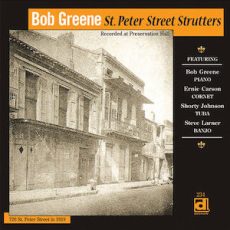
Daily Dose Of Jazz…
Bob Greene was born on September 4, 1922 in New York City, New York. He was active early in his career in Dixieland jazz revival groups, working with Sidney De Paris, Baby Dodds, Conrad Janis, and Johnny Wiggs.
Leaving music for a period, he got a degree from Columbia University and worked in radio and speechwriting, including for Lyndon Johnson and Robert F. Kennedy. After Robert Kennedy’s assassination, he quit speechwriting and returned to jazz in the late 1960s again, working with Zutty Singleton. Focusing on music full-time, Bob worked in the early 1970s with Don Ewell, Albert Nicholas, and the Peruna Jazz Band.
He put together a traveling ensemble which paid tribute to the music of Jelly Roll Morton. They toured worldwide, recorded several albums and among his sidemen in this setting were Danny Barker, Tommy Benford, Herb Hall, Milt Hinton, and Johnny Williams.
The nephew of Paul Blum, a former intelligence officer, he spent time writing his uncle’s biography, which was published in 1998. Pianist and bandleader Bob Greene transitioned on October 13, 2013 in Amagansett, New York.
More Posts: bandleader,history,instrumental,jazz,music,piano
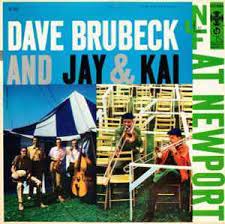
Daily Dose Of Jazz…
Norman Louis Bates was born on August 26, 1927 in Boise, Idaho. His mother was an organist and he was a younger brother of bassist Bob Bates. He played in Jimmy Dorsey’s band for a year in 1945, then with Raymond Scott and Carmen Cavallaro shortly thereafter.
By 1948 he was part of the Dave Brubeck Trio, and the following year performed with Paul Desmond. Norman recorded with Jack Sheedy’s Dixieland Jazz Band in 1950.
After spending four years in the Air Force, Bates played with Wally Rose’s Dixieland Band in 1955 and then replaced his brother Bob in Brubeck’s quartet, playing on multiple albums from Dave Brubeck and Jay & Kai at Newport (1956) onwards. He also recorded with Desmond’s group again in 1956. In 1957 he left Brubeck, and led a trio in San Francisco, California.
Double bassist Norman Bates transitioned on January 29, 2004.
Bestow upon an inquiring mind a dose of a Boise bassist to motivate the perusal of the genius of jazz musicians worldwide whose gifts contribute to the canon…
More Posts: bass,history,instrumental,jazz,music
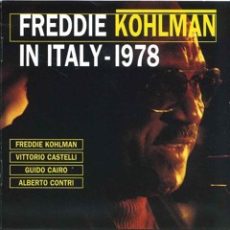
Daily Dose Of Jazz…
Louis Freddie Kohlman was born on August 25, 1918 in New Orleans, Louisiana and studied under the famed drummer Louis Cottrell, Sr., and Manuel Manetta. He began playing professionally as a teenager, working with A. J. Piron, Joe Robichaux, Papa Celestin, and Sam Morgan.
Moving to Chicago, Illinois in the middle of the 1930s, he played with Albert Ammons, Stuff Smith, Earl Hines, and Lee Collins. After returning to New Orleans in 1941, he led his own band from 1944. Among the musicians in his band was pianist Dave “Fat Man” Williams. In the mid-1950s he played briefly with Louis Armstrong and recorded as a leader with the Jambalaya Four in 1953. He moved back to Chicago and became the house drummer at Jazz, Ltd. There he played with everyone from Billie Holiday to Art Hodes before once again returning to New Orleans in the 1960s.
Back home he played with Louis Cottrell, Jr., the Dukes of Dixieland, and the Onward Brass Band. In 1969 he appeared at the New Orleans Jazz Festival. As a member of the Preservation Hall Jazz Band, he traveled throughout the United States and overseas.[1]
Playing European festivals with his own groups in the 1970s and 1980s, Freddie recorded with Chris Barber and Dr. John in 1980, and also appears on record with Albert Nicholas, Art Hodes, Bob Wilber, Harry Connick, Jr., the Excelsior Brass Band, and the Heritage Hall Jazz Band.
Kohlman appeared in several films, including Pete Kelly’s Blues, Pretty Baby and Angel Heart.
Drummer, vocalist and bandleader Freddie Kohlman transitioned of cancer at his home in New Orleans, aged 72 on September 29, 1990.
More Posts: bandleader,drums,history,instrumental,jazz,music,vocal



